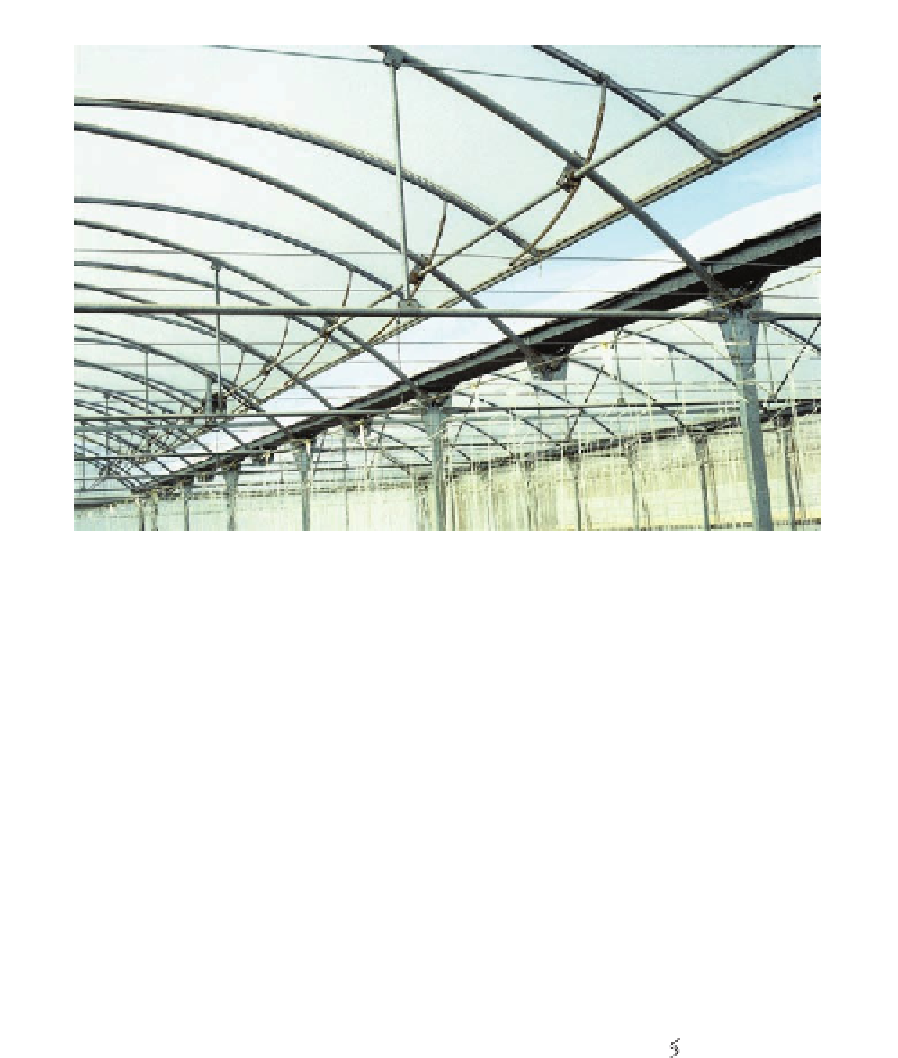Agriculture Reference
In-Depth Information
Photo 8.1.
The vents must be mechanized to facilitate their automatic opening and closing.
Therefore, the humidity difference between
the interior and exterior is more important
than the temperature difference, for green-
house cooling purposes (Fig. 8.1).
The air renewal rate (
R
) is expressed as:
T
i
T
e
volume of air exchanged
greenhouse volume
R
=
×
hour
3
m
mh
(8.1)
=
3
×
Water spraying
nozzle
It may also be expressed based on the green-
house ground area. The ratio ventilation per
square metre of ground (
V
) will be:
volume of air exchaged
greenhouse ground area
V
=
T
i
T
e
×
hour
3
m
mh
(8.2)
=
2
×
Fig. 8.1.
Idealized scheme of natural ventilation in a
greenhouse. (a) In a greenhouse with dry soil, with no
irrigation or crop, the heat removal, as the air is renewed,
is very inefficient because the dry air carries very little
heat. (b) In a greenhouse with water fogging, the heat
removal potential is high because water absorbs a lot
of heat as it changes into vapour and then is removed
from the greenhouse with ventilation. A greenhouse
with a crop is also easier to cool because the trans-
pired water absorbs heat as it changes phase from
liquid to gas and then is removed through the vents.
T
i
, Interior air temperature;
T
e
, external air temperature.
The relationship between both ratios is:
V = R
×
H
(8.3)
where
H
= average greenhouse height (m)
The air exchanges between the interior
and the exterior take place by leakage
through slits and through the vents due to
pressure differences between the interior
and the exterior air. The wind and differ-
ences in air density between inside and

















